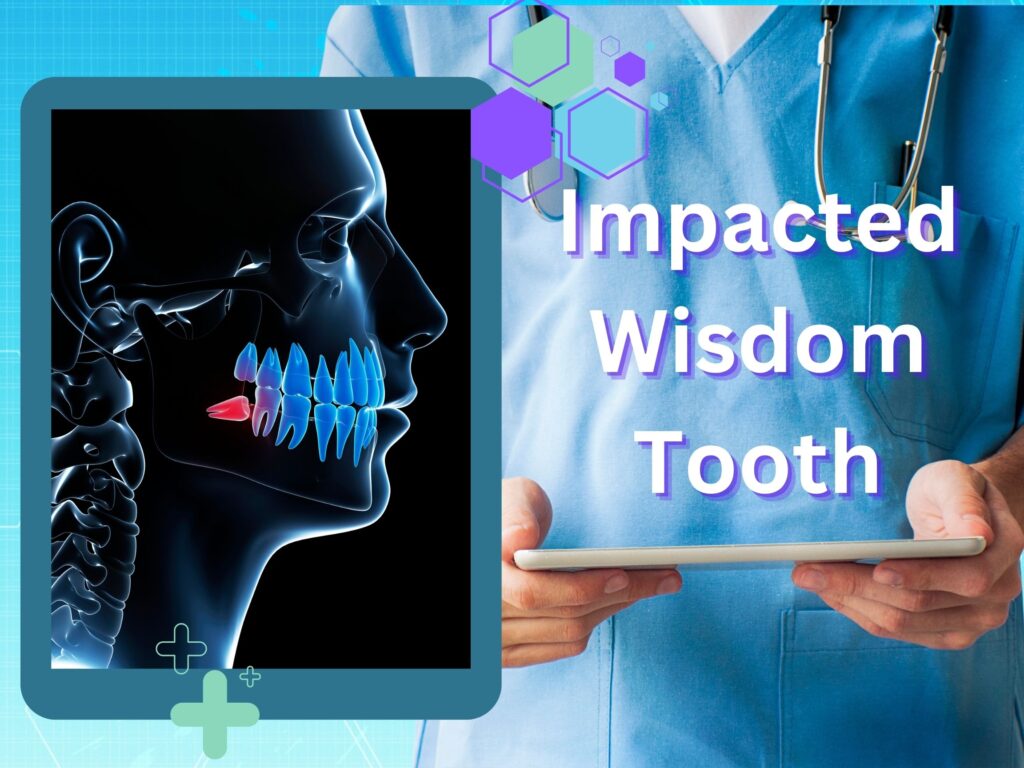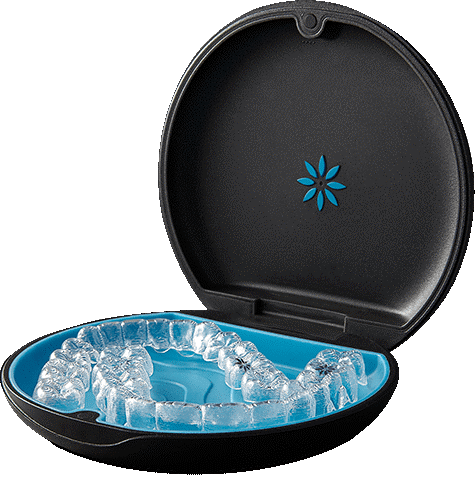Impacted Wisdom Tooth Overview
What’s An Impacted Wisdom Tooth?
To begin, an impacted wisdom tooth happens when your third molars become partially or fully trapped. Further, this can present a number of health problems. For example, tooth decay, gum disease or infections.
Your wisdom teeth come in during your late teen years to mid twenties. On average around 17 – 25 years of age. However, when your wisdom teeth come in, they do so by erupting through your gums. Many people don’t have enough room to accommodate their third molars. This can lead to your wisdom teeth impacting your molars, pressing against them and getting stuck.
Fully Impacted VS Partially Impacted:
For starters, a fully impacted wisdom tooth is not visible. It remains under the gum. Also, it’s only viewable via x-ray. As it presses against your existing back molars, you may experience pain. Next, a partially impacted wisdom tooth has erupted above the gum line and can be partially seen.
Different Types of Impacted Wisdom Teeth:
- Horizontal impaction – Wisdom tooth lies horizontally, completely trapped underneath the gum. Can be painful as it puts pressure on the second molars.
- Distal impaction – When you wisdom tooth is angled towards the back of your mouth. This is the rarest type.
- Mesial impaction – The most common type of wisdom tooth. Your wisdom tooth is angled towards the front of your mouth.
- Vertical impaction – When your wisdom tooth is in the correct place for eruption, but still under the gums.
Are Impacted Wisdom Teeth Common?
Back when we were cave men, our wisdom teeth were useful as they helped our ancestors eat tough meat. However, it is believed that since we started eating softer foods thanks to our ancestors learning to cook with fire, we started to lose the need for our wisdom teeth.
So, is having an impacted wisdom tooth common? Yes, extremely. According to the American Academy of Oral and Maxillofacial Surgeons, 90% of people have at least one impacted wisdom tooth.
Symptoms:
Many people don’t have an issues with their impacted wisdom teeth. However, others will experience some of the following symptoms:
- Pain or swelling of your jaw or face.
- Red, swollen or bleeding gums.
- A bad taste in your mouth.
- Bad breath (halitosis).
- Difficulty opening your mouth all the way.
Impacted Wisdom Teeth Treatment:
If your impacted wisdom tooth is causing pain, swelling or other dental damage the best course of action is wisdom tooth removal. After having your wisdom tooth or teeth extracted, you can expect to recover in about one to two weeks.
Your dentist will fill you in on the important stuff, you will also get a prescription for the pain. One thing you wont be able to do is chew or use a straw. Most people will eat a variety of soups during this time.
Removal Complications:
Having your wisdom tooth or teeth removed requires surgery. Like any surgery, complications may arise like:
- Dry sockets. This happens when the blood clot from surgery becomes dislodged from your tooth socket prematurely, exposing your bone.
- Infection. Sometimes bacteria, food or debris can become trapped in the tooth socket, resulting in an infection. If this happens make sure to contact your dentist.
- Damage to nearby structures. Sometimes your nerves, jawbone, sinuses or other teeth can become damaged during wisdom teeth removal. Advanced surgical techniques reduce the risk of these injuries, but they can still happen. Additional oral surgery procedures may be necessary to address this type of damage.
Conclusion
We provided you with a ton of information. We went over definitions, symptoms, the surgical removal process, the potential complications and more. If you are having issues with your wisdom teeth, please contact our office. We’d be happy to help answer questions or to schedule an appointment for you.


